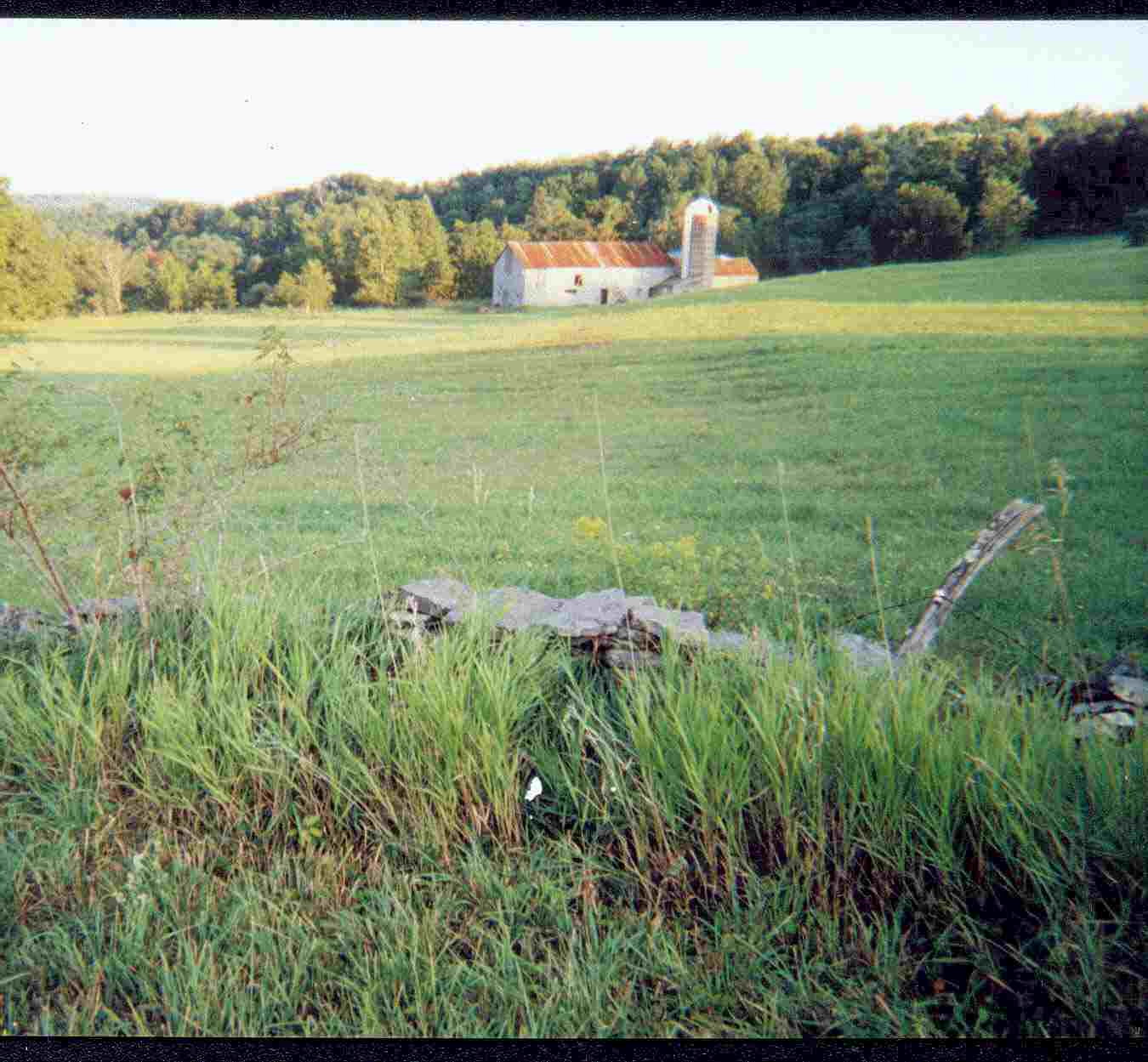
Articles
On Cutting
by Meredith Sue Willis
The Ten Mile Meadow Project: Preserving Land and Language
On Cutting
by Meredith Sue Willis
The best time for making changes in texture and diction in prose writing is after you have drafted several times and decided you are well on your way to a finished piece. This is the time– after you've struggled with your point of view and the order of your scenes and what you are really discovering and revealing and how it all comes out–to spend long hours agonizing over whether to use "red" or "crimson" or "incarnadine."
I don't believe that there is always only one right way of saying something. There are certain short poems of Emily Dickinson's that seem perfect to me, but often the best way to convey the idea varies with the writing situation. For example, I was asked to shorten my sentences when I was editing my first novel for children, The Secret Super Powers of Marco. My first reaction was horror. But then, after enjoying my righteous indignation for a while, it occurred to me that I was writing this book especially for children who don't like to read. I really did want to make my story accessible for as many of them as possible. So I shortened the sentences. I didn't change the words, only put periods where I had had semi-colons. It felt fine.
On my own, with no editors making suggestions, I often cut a really terrific word or image and replace it with a more ordinary one because the terrific image seems to draw too much attention to itself and slows down the reader. Other times, of course, I do the opposite: I come up with a word that really is a show-stopper, because at that moment I actually want to stop the show.
Word choice is, of course, part of the nuts and bolts of writing. I like it best when the word choice follows naturally with the other elements of deep revision, such as adding more specific information or figuring out what voice will tell your story best. However, there are many times when looking directly at the words themselves will open up new insights for revision. Consider the following two lines: "crazed like the rivulets under the glaze of an old piece of pottery" versus "crazed like the cracks under the glaze of old pottery."
By changing a fancy word (rivulets) to a simpler one (cracks) and cutting a few words ("an old piece of pottery" becomes "old pottery"), the sentence is shorter, easier to visualize (because it has fewer elements), and easier to read aloud. Usually I recommend greater specificity--a particular green Mexican cup, say, rather than just pottery in general--but here we are talking about elements in a simile where too much elaboration is distracting. I wanted that pottery to be just a brief hint of a mental image. 'Rivulets'--a very pretty word--calls too much attention to itself: you begin to think about water and the relative size of a creek and a brook when what I wanted was to describe something that exists in its own right and isn't even wet.
TRY THIS: Describe some common object as elaborately as you can. Then describe the object again as simply as you can, with as few words as possible. Is one style more natural to you than the other? There's no reason why you can't write both ways. In which circumstances would you write in the elaborate way? The simpler way? Is it possible to combine the two passages?
For me, the cutting, polishing, editing, and critiquing are both hard work and great pleasure. This is the time to step back from the work and narrow the eye to make sure it is presenting its best side. But polishing can also be a time for final insights into the material, particularly in writing poetry. For prose writers, the point about how trimming intensifies expression is especially applicable. If I'm writing a short story, between the first full draft and the final version, I typically cut away about a third of the words. Thus, if a short story draft is twenty-five pages of typed manuscript, the final version ends up being around seventeen pages or even fifteen or thirteen. I try to go through my piece (after it has sat for a while) as if I were an easily bored reader, looking for anything that doesn't make the piece more interesting. I try to pretend that someone else wrote all those words and I cut everything that doesn't seem absolutely essential.
TRY THIS: Do a Rapid Read. Go through your piece as fast as you can, looking for anything that seems remotely out of place or uninteresting. Whenever your interest as a Rapid Reader seems to flag even a little, mark the passage for possible cutting. Later, come back and read through without the marked passages. If the piece still makes sense without a marked passage, cut it. This is also useful if you want to submit a piece to a literary magazine or online journal with a strict word limit.
TRY THIS: To look closely at the words, try revising by reading backwards, that is, read the last paragraph first, then read the next to the last paragraph, and so on. This gives you an opportunity to get a sense of your paragraphs and sentences as individual entities. Do your sentences stand alone? They may not. After all, everything that comes before leads up to that final sentence, but you are likely to catch repetitious or awkward phrasings that you missed in the forward flow of reading.
TRY THIS: Do a final read-through at as close to your normal reading pace as possible. Don't read at your desk or on your computer screen, but rather, from a hard copy while sitting in your easy chair or in bed or wherever you usually read. Try not to become an editor, but stay a reader. Anything that bothers you or stops you may well be something that would bother or stop another reader.
Here are two examples of the way I make cuts in my fiction. First is a short passage from a novel-in-process. (Susan and Dwight are married; their daughter, Fern, is a teenager, and Susan's father hasn't been answering his phone):
EARLIER VERSION (probably the sixth or seventh version):
When Susan walked back into the living area, she said, "He isn't answering."
"He's in the shop fixing something," said Dwight.
Susan said, "On Sunday morning?"
"Then maybe he went to church," said Dwight.
"Oh sure," said Fern. "Grandpa's in church all right."
"You never know," said Dwight, "you never know when these old sinners are going to repent."
TRIMMED-DOWN VERSION:
When Susan walked back into the living area, she said, "He isn't answering."
"Maybe he went to church," said Dwight.
"Oh sure," said Fern. "Grandpa's in church all right."
"You never know," said Dwight, "you never know when these old sinners are going to repent."
The earlier version was not bad; in fact, it was perfectly acceptable, and perhaps even more naturalistic than the second since people usually say more words and make more noises and gestures in real life than we conventionally transcribe in writing. In reading this tiny snippet, you may prefer the longer version. In the context of the whole passage, however, I found that tightening the scene helped to emphasize a characteristic of Susan's--that she is laconic, indeed depressed. So the tightening actually does two things at once: it intensifies the scene and adds information about a character.
If you have any doubt about whether a sentence or dialogue exchange should be cut, ask yourself whether it is doing more than one thing at once. If it isn't, it is a likely candidate for cutting.
Here is another example from an early draft of my novel, Trespassers. This sample is from when the novel was in the third person limited, before I decided to switch back to first person. I decided to cut the italicized material, an interior monologue that gives insight into the protagonist's state of mind.
BEFORE CUTTING (but after maybe four drafts):
This time, the phone didn't ring, but she did stop and go back for her term paper. She thought she might as well slip it under the professor's door, since his office was in that building, and she was going to be there anyhow. I shouldn't, she thought. This is just good-girl behavior, and I don't want to be a good girl. But I don't care, I'm also the kind of person who has to finish things. She rolled the paper into a piece of cardboard, taped it shut, and tucked it into her jeans inside her sweat shirt.
AFTER CUTTING:
This time, the phone didn't ring, but she did stop and go back for her term paper. She thought she might as well slip it under the professor's door, since his office was in that building, and she was going to be there anyhow. She rolled the paper into a piece of cardboard, taped it shut, and tucked it into her jeans inside her sweat shirt.
I want to reiterate that in this sample too, the extra material is not intrinsically bad. Early in a novel or story, you might want to convey more about the character's personality by using such material. It certainly helped me in the process of writing: I learned more about the character. Near the end of a novel, however, the extra details slow down the action. In this example, I felt that the reader would simply want to know what was going to happen next.
Perhaps the single most important technique for revising is the simplest: Get a distance on your writing. Separate the process from the product. Imagine the reader reading it. Imagine the toughest English teacher you ever had going over it. And if you have trouble getting distance on it, lay it aside for six months, one month, a week, a day.
TRY THIS: As an experiment, take some short passage of your writing (a page, a long paragraph) and set yourself the task of reducing the length by one-third. Be very strict with yourself. Can you do it?
TRY THIS: Try the same exercise, exchanging pieces with a friend. Try to pare down the other person's piece by one-third or one-half. Is it easier or harder to work on someone else's piece?
TRY THIS: Just as hearing your work by reading it aloud or tape recording it can give you the extra distance to edit better, so can the physical relationship of your eyes to the words. If you work on a computer, print out a hard copy, and revise on that for a while, or if you are working on a manuscript, carry it to a higher table and work on it in a standing position for a while, so that your eyes quite literally have a different perspective, a different distance. If you are working at a computer, push your chair back so that you are farther from the screen and keyboard.
There is an old cartoon in which a sculptor has a visitor in his studio. The sculptor is working at a great multi-ton chunk of marble; the visitor's question, though not stated, is obvious. "Oh," says the sculptor, "I just chip away everything that doesn't look like an elephant." I don't know how good the joke is, but the lesson for a writer is excellent: if it isn't a part of this particular elephant--or story or poem or essay or book or even of this line or phrase--chip it away.
But I would also add, save the chips. Taking something away is not the same as destroying it, nor is it the same as saying the first version was bad or a failure. Those rejected words may have been vital to your process of working through your piece. Or, they may have been part of an idea that underlies your present idea but has been superseded.
Most importantly, they may be the beginning of something new.
(Article adapted from Deep Revision: A Guide for Teachers, Students, and Other Writers, Teachers & Writers Press, New York, 1993.)
Meredith Sue Willis has published eleven books of nonfiction and fiction, including three novels, Higher Ground, Only Great Changes, and Trespassers (all from Hamilton Stone Editions). Various excerpts appear at http://www.aol.com.members/MSueWillis. Her most recent is an expanded edition of Personal Fiction Writing (Teachers & Writers Press, 2000). Raised in West Virginia, she now lives in New Jersey.
The Ten-Mile Meadow Project:
Preserving Land and Language
Ten-Mile Creek originates in Mysotis Lake in the township of Rensselaerville in southern Albany County. It flows down through the lush hamlet of Medusa, joining Eight-Mile Creek (from Westerlo) in thick forest near the end of South Street just north of the Greene County line, thence into Catskill Creek and eastward for roughly 25 miles to the Hudson River.
Ten-Mile Meadow consists of 100 acres of rolling grassland bordered on the east by the tree-lined creek and a favorite swimming hole used freely by residents until the early 80's with the blessing of then owner, dairy farmer Ed Walgren. Many still refer to it as Walgren's Farm. Though the farmhouse opposite was sold off, two barns still stand near the road, which leads a few paces down the hill to the bridge on Main Street with its general store and post office, firehouse and Medusa Church.


The Ten-Mile Meadow Project is dedicated to the acquisition and preservation of this land and water resource for local environmental and recreational benefit, and to the enhancement of community literary and artistic services, experience, and appreciation.
Medusa is home to about 150 families. A few residents are still grain, produce or dairy farmers, though most are engaged in other businesses--guest house or culinary, specialty shops, light industry--or practice a trade or profession, such as carpentry or teaching.
The hamlets of Preston Hollow and Potter Hollow, both as watermarked and mountainviewed as Medusa, comprise the rest of the township, itself part of a larger trans-county concentric, east to Westerlo, north to Middleburgh, south to Durham and Greenville, the central site of the most extensive shopping, banking, schools, and similar services in the area.
The community is stable, cohesive, and relatively prosperous, owing in large part to its natural beauty, which appeals to dual homeowners, sportsmen, vacationers, and retirees. Its active tourist board and arts council have won competitive state awards. It has readers and advertisers enough to support three weekly newspapers.
Those papers carried recent reports of a controversial proposed power installation in an historic river town 20 minutes east of Medusa, and of a cellular tower closer by. Whether such development is greeted as economic expansion or as economic encroachment depends on the individual mindset.
The Meadow could accommodate twenty houses on 5-acre lots: twice the number that make up all of Main Street now. Economic expansion or encroachment?
The Meadow is on the market now. Its owners, successors to Ed Walgren, live outside the community. They have held it for many years. Long enough, they believe.
Rockewn Ten-Mile Creek is loud. All that tumbling. Under the bridge, a waterfall. It roars in Spring. Audible up and down Main. And all along the east boundary of The Meadow. It takes about an hour to wade Ten-Mile downstream from the bridge to its meeting point with Eight-Mile, another hour upstream to its bridge near the cemetery. The deer were surprised to see a hiker.
The Meadow could stand some improvement. It was mowed lately--maybe to show off its topography, its stone walls. Some more wildflowers would be decorative, a few handfuls of seeds from the New England Wildflower Conservancy. A marker here or there, so children could learn all the names. A skymap too, for the nights lying on one's back, eyes on the layered stars.
For the barns, a broom, then a printing press and book bindery. Old newspapers on their way to the town dump, diverted and recycled.
Yeats set to music against the Ben Bulben-like outline of a Catskill rise. Hamlet's father appearing out of the mists of the moor. A kid's fish story--exaggerated, but somehow still believable.
(Medusa, July 2001)
~ . ~
We know you continually receive requests from arts, health, and other charitable organizations. No one can respond to every appeal. Nor do we expect to rely solely on individual contributions to realize this project. We are diligently prospecting among corporate, foundation, and government sponsors, expecting that they will bear the primary burden, though individual, natural persons enjoy the primary benefit.
Typically, you would be asked to select a monetary level of membership, offered benefits and privileges, designated a "friend," an "associate," a "patron." We've dispensed with all classifications but one: Be kind, if you will, generous, if you can.
And, by all means, indicate to us your preference for how your contribution should be used, i.e., whether for ___the acquisition, ___ the wildflower garden, ___ the book bindery or for ___ the literary and performance programs.
We ask that checks or money orders be issued in the name of The Author's Watermark, Inc., with the memo notation: "Ten-Mile Meadow Project."
Many thanks.
The Author's Watermark, Inc.
Box 1, Medusa NY 12120
(A not-for-profit corporation duly formed
under the laws of the State of New York
with its principal place of business in Medusa.)